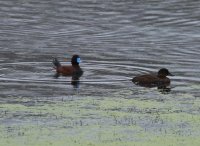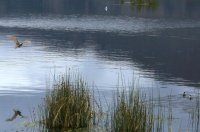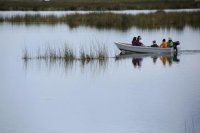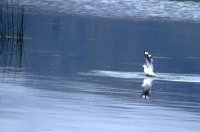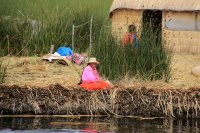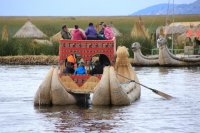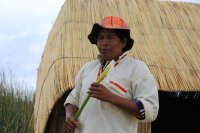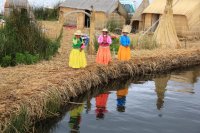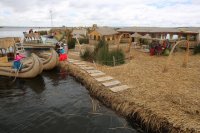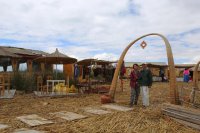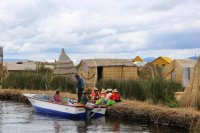![]()
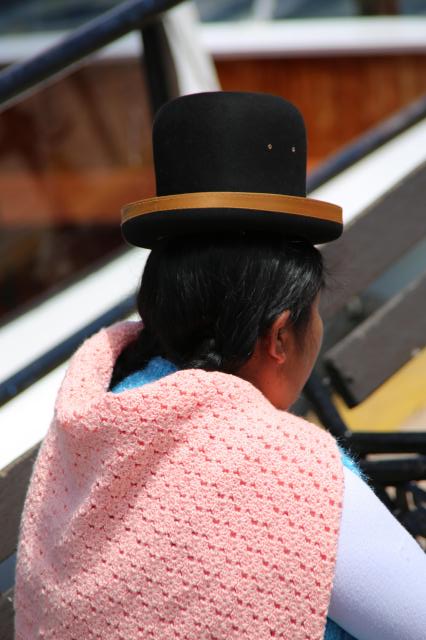



There is no electricity on the Island,
and they live a self-sufficient life and make a living by selling folk crafts to tourists.
I imagined a more, simple life, but the Island, which became a tourist destination,
witnessed the reality of bargaining with tourists.
Lake Titicaca, which is more than 12 times the area of Lake Biwa surrounded by the Andes.
A huge lake that stretches from southern Peru to western Bolivia.
The vastness that can be seen as the sea rather than the lake.
The Uru people who live on the lake.
About 240 Islands, large and small, are all floating Islands made of Totora.
It takes 30 minutes by a shared boat from the nearby port of Puno.
Aquatic plants called totora, such as reeds, are clustered all over the area.
Take a leisurely trip to the floating Island.
The Island we landed on is home to 18 people in 5 families.
There are hotels, schools and churches on the big Island.
The Islanders feed on the small fish that live in the lake,
but small boats come to sell their daily necessities,
so it is a comfortable life.
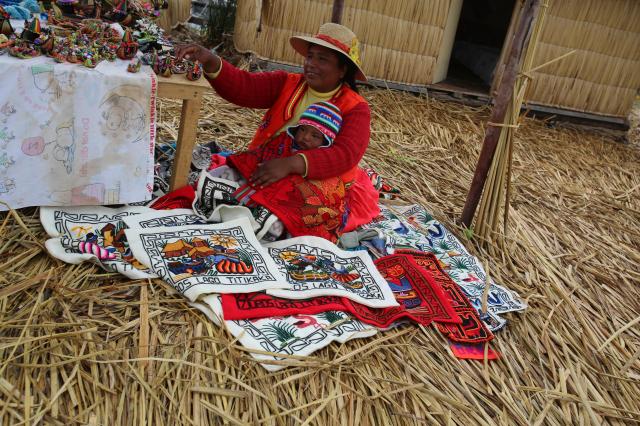
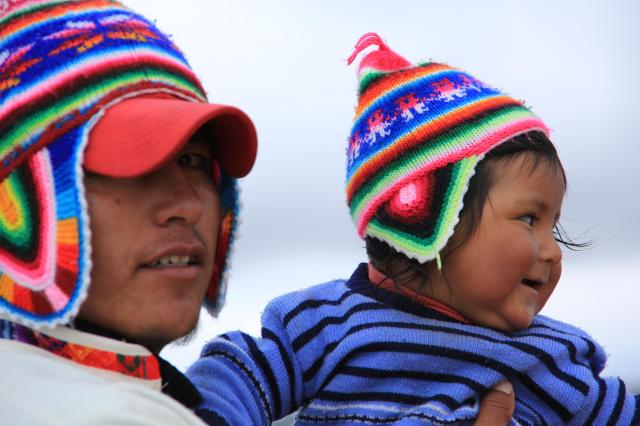

Drinking water uses abundant lake water,
but I am worried that sewage is also the same.
Totora's roots are white and can be used as food.
A construction method in which a totora is floated on water at a depth of 20 to 30 m,
a pile is struck, and a rope is used to fix it.
The house is also a simple one to put a box-shaped totora on it.
The Island floating on the lake, which is higher than Mt. Fuji at an altitude of 3827m,
is fluffy, difficult to walk, and does not feel very good.
The reason why such a lifestyle was born is the result
of the Spanish strategy of escaping to the lake
during the Inca era about 500 years ago.
